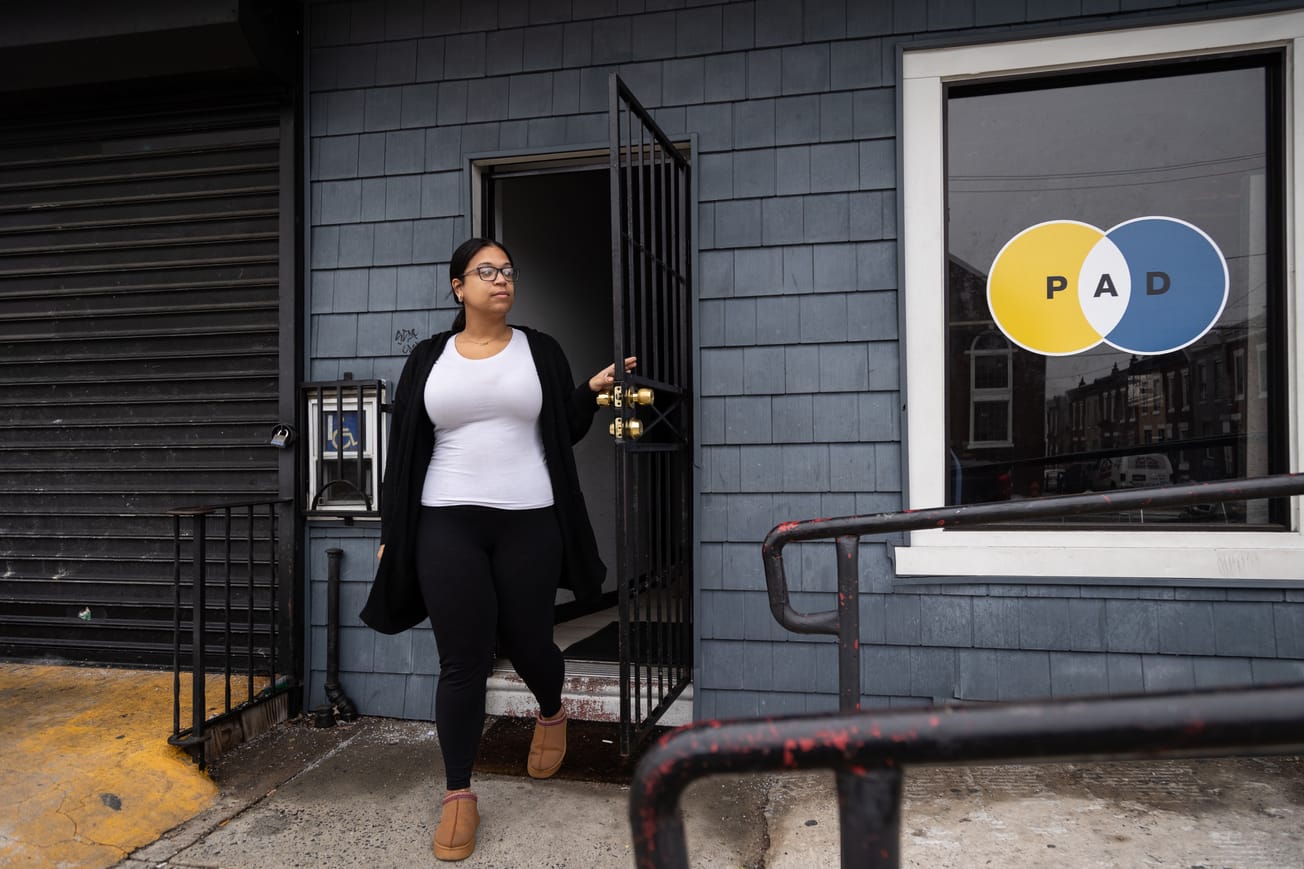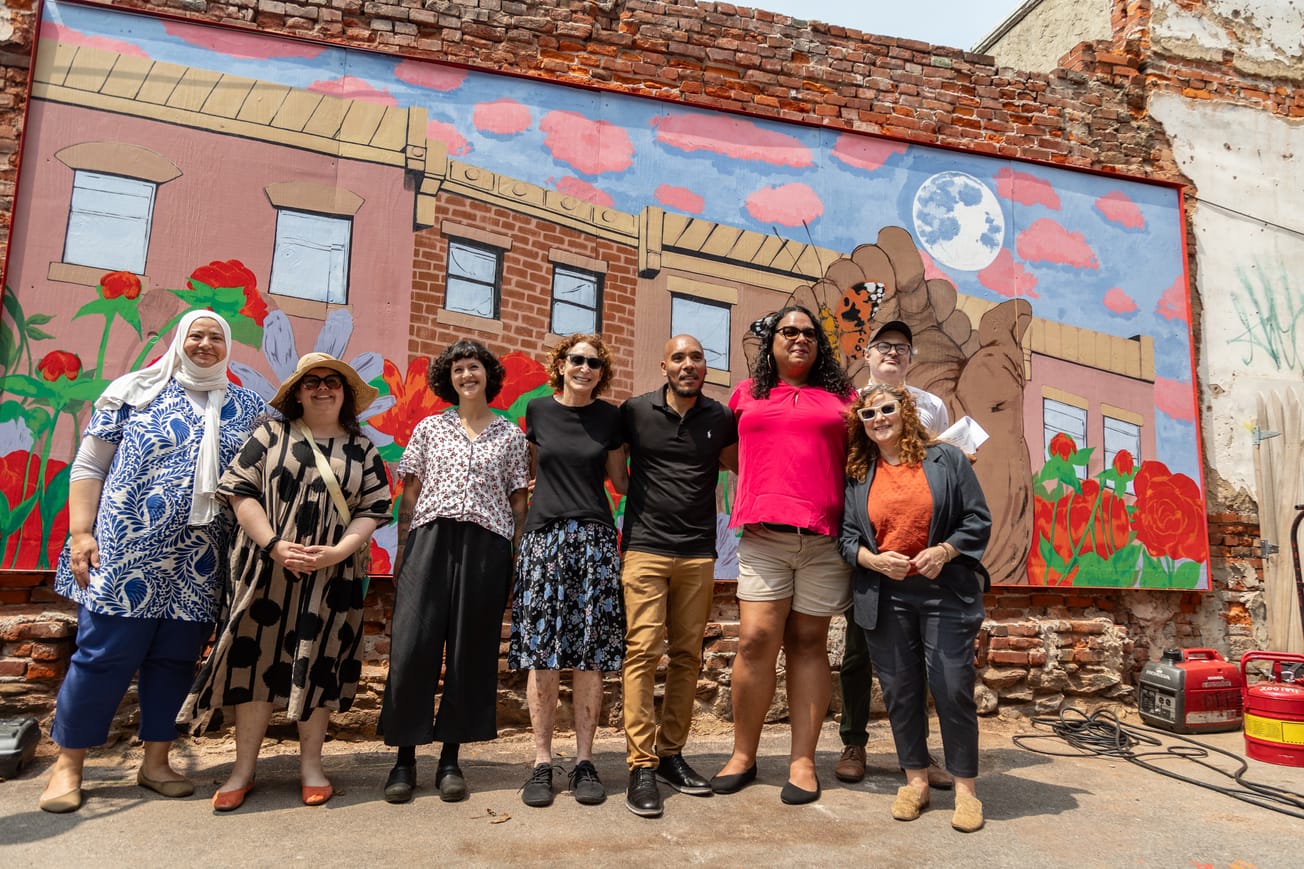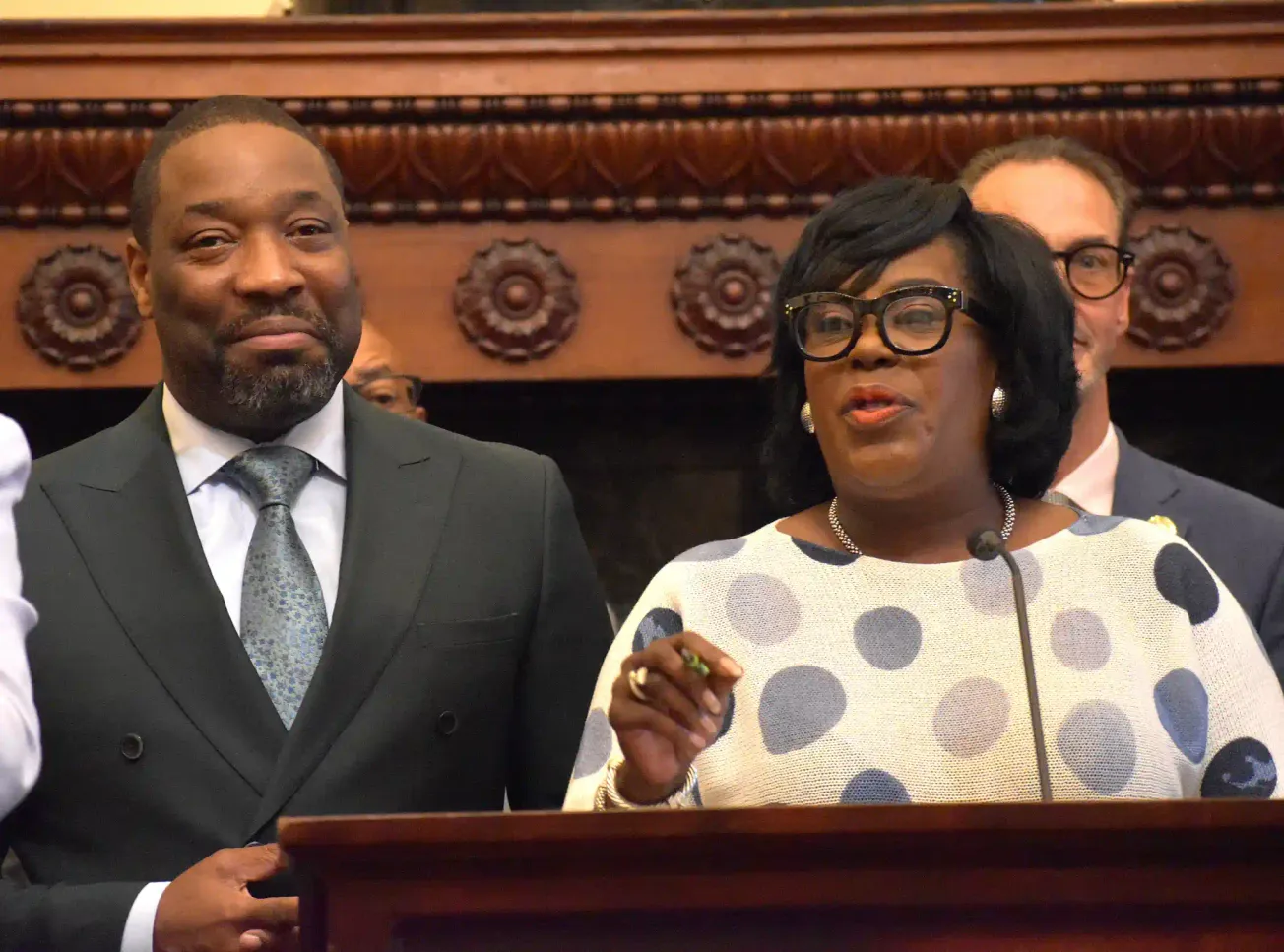Tucked under a faded blue awning on Allegheny Avenue near F Street is an opportunity for people who commit certain nonviolent crimes to receive social services instead of jail time.
Inside Kensington’s 1,300-square-foot Police-Assisted Diversion (PAD) office, there’s a long room with some folding tables that serves as an intake center where people can meet with an outreach specialist to make a plan for treatment, housing, or other next steps. The space can accommodate about five visitors at once.
People arrive there through one of three avenues: an arrest by police, a social referral by police, or by walking in and asking for help. It’s a citywide program, but the bulk of arrest referrals happen in Kensington, according to program staff.
Not everyone who goes to PAD has committed a crime. But for people who police pick up for drug use or possession, retail theft under $499 or prostitution, it’s designed to offer an alternative to incarceration.
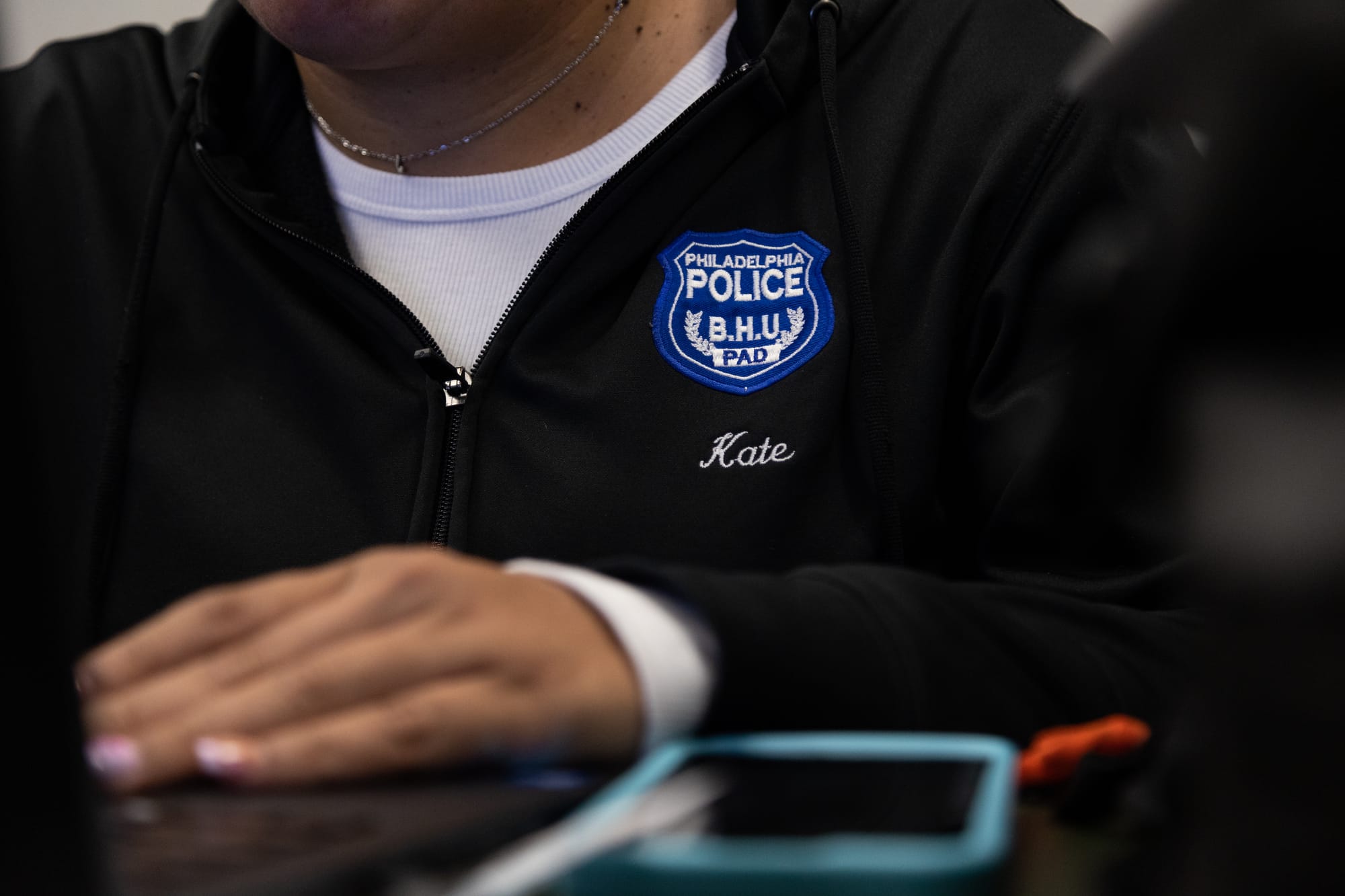
PAD is a “pre-booking” diversion program that was launched in 2017. To qualify, participants cannot have existing warrants. People can only be diverted to PAD twice. If they’re arrested for a PAD-eligible offense a third time, they get booked and go through the rest of the charging process.
“What we’re trying to do is … leverage that point of contact with the police as an opportunity to create an offering apart from further criminal justice entanglement,” said program director Kurt August.
In 2023, police made 1,485 arrest referrals and 237 social referrals, according to data provided by the city’s Managing Director’s Office. About 900 (61%) of the arrest referrals were for crimes related to illicit drugs.
Of those arrested and diverted to PAD in 2023, 150 people – or roughly 10% – have been diverted again. For those diverted in 2022, the program found that only 8.5% have since picked up a new arrest anywhere in the country – a sign that the PAD program “is effective for most people,” August said.
“The sort of persistent myth is that people are just going out or repeating the same behavior over and over again, no matter what you do,” he said. “Police are out here every day doing narcotics enforcement. So, if PAD wasn't helping these folks, then presumably that number should be a lot higher.”
PAD is now looking for a bigger space in Kensington because their current locations are reaching capacity, August said. Their plan to expand comes as Mayor Cherelle Parker has promised to place more police officers in Kensington and is expected to roll out a full public safety strategy for the neighborhood in April.
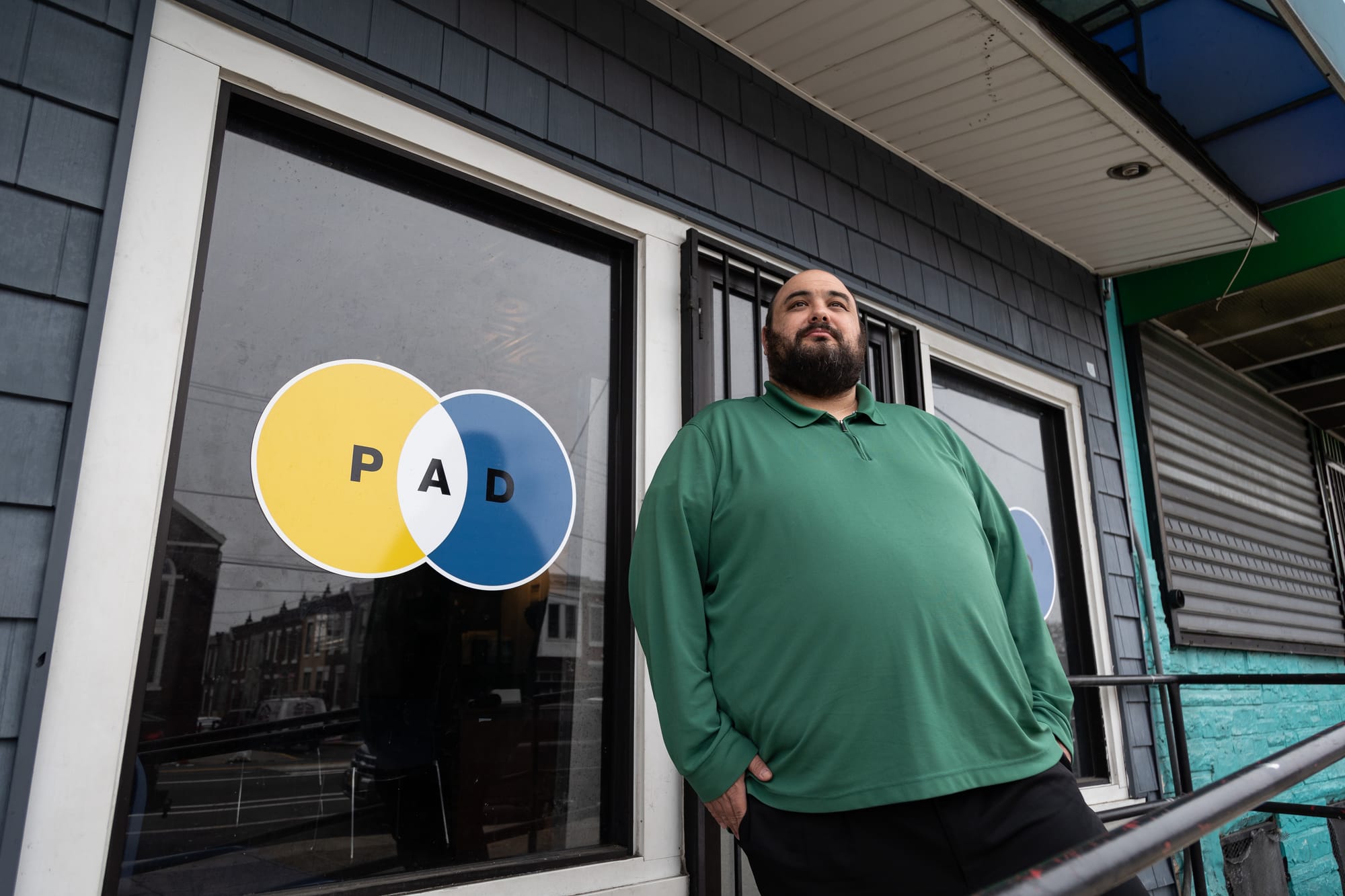
Police are already ramping up enforcement – the number of citywide arrests made for all PAD-related offenses between January 1 and now is up 31% this year compared to the same period in 2023, according to an analysis from the District Attorney’s Office Data Lab.
Arrests for drug possession increased 36%. Retail theft arrests jumped 127% during the same period. However, prostitution arrests decreased by 37%. The 24th and 25th police districts have accounted for 50% of the city’s PAD-eligible arrests.
Meanwhile, citywide arrests for all drug sales – which are not eligible for PAD – increased by 18% – a lower rate than arrests for drug possession. Firearm-related drug sale arrests decreased by 8%.
Earlier this week, the Parker administration also asked City Council for $100 million to open “triage centers” that address drug use across the city. But while some, including August, have described PAD’s model “as a sort of triage/urgent care,” it’s unclear what the program’s role – if any – will be.
The mayor’s office declined to comment on the administration’s “comprehensive triage and wellness strategy” and would not confirm whether PAD will be involved in that plan. Meanwhile, others like Philadelphia Police Commissioner Kevin Bethel and Councilmembers Quetcy Lozada and Mark Squilla – two of the four members of the Kensington caucus – have questioned PAD’s effectiveness, suggesting the triage they have in mind would have more teeth.
“We divert a number of people without taking them into custody,” said Bethel at Tuesday’s budget hearing. “Many of those individuals, we will turn over and hope that they go to services, but oftentimes not be able to complete that loop … so we see [triage centers] as a great addition to our work, and really build upon the work that we want to do as an organization.”
Lozada and Squilla cast doubt on PAD’s model in a January interview with Kensington Voice.
“We can't put our finger on how successful the PAD program is and whether we should continue to invest or support that program or not,” Lozada said.
Squilla believes the program should more intensively track whether PAD participants access the services they’re connected to, and establish more consequences if they stop engaging in those services.
“There's a triage service, there's a third party provider, and then that's supposed to be monitored,” he said. “Not seeing that follow-through with the end … makes us doubt the program.”
Representatives from the city said there are no plans to change PAD protocols, but that there are discussions around “ways to streamline the process of determining a person is not eligible for PAD” and instead direct them to the Accelerated Misdemeanor Program (AMP) in the District Attorney’s Office. The AMP program is post-booking, which means people are charged and offered services while in the court system.
“If you don't complete the court-mandated services, then the charges will then be prosecuted and followed through with,” Squilla said. “That program could still be used better.”
Carla Sofronski is the executive director of the Pennsylvania Harm Reduction Network, which was involved in early conversations around PAD and pushed for it to be a pre-booking program.
“If they remove programs such as this, what is their alternative? Increased populations in jails, is that where we’re at?” she said. “I don’t know what they’re thinking.”
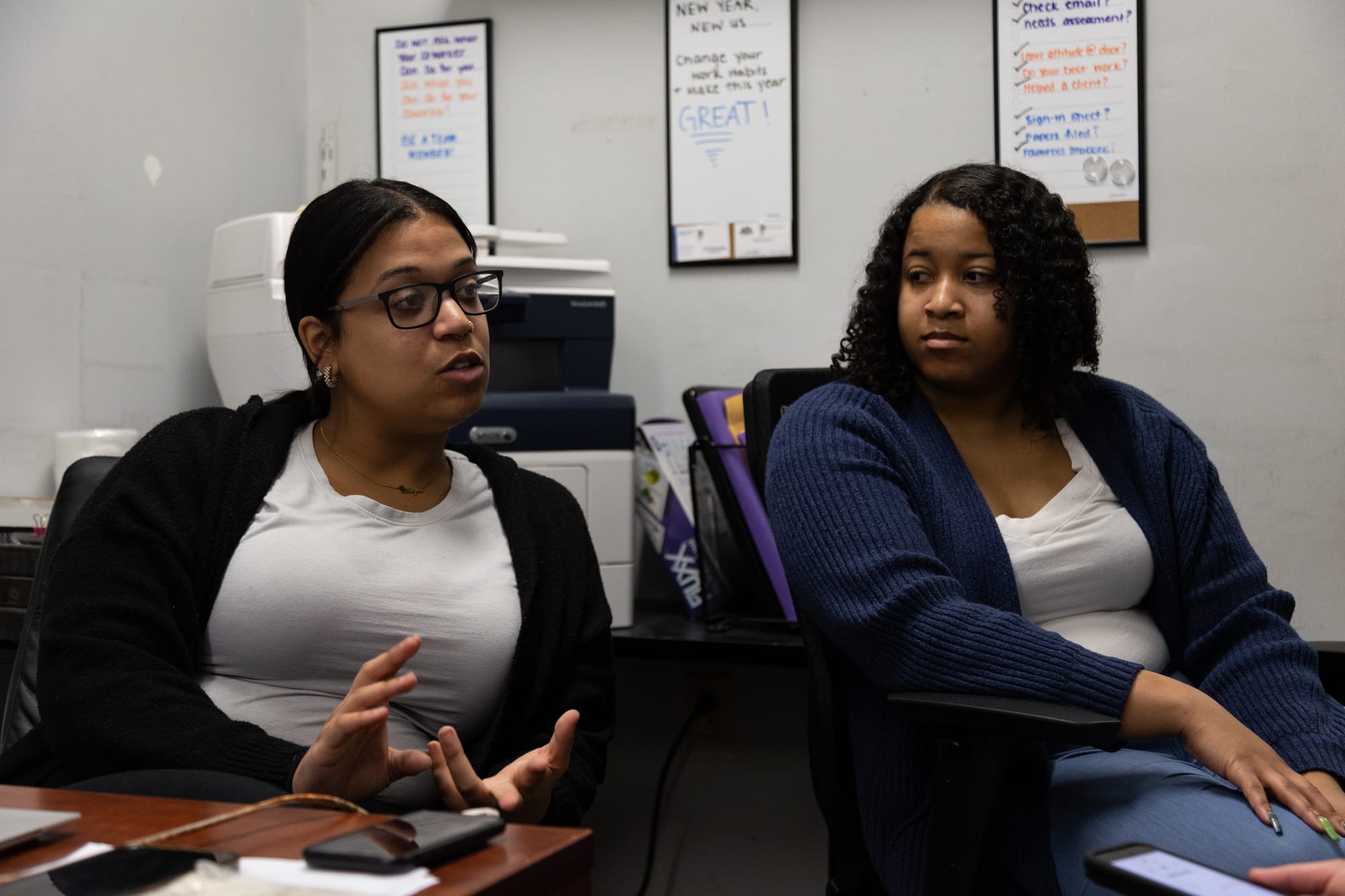
How PAD works
People who accept services through PAD – either through arrest or social referral – are connected to one or more of the program’s six partner providers:
- Merakey - Inpatient/outpatient addiction linkage
- University of Pennsylvania - Medical & wound care
- Salvation Army - Human trafficking /sex trafficking
- One Day At A Time – Shelter
- PATH - Co-occurring mental health and addiction disorders
- Philadelphia Crisis Line - 988
PAD participants don’t do formal check-ins with their caseworker, as a convicted person who has a probation officer would be required to, August said. There are no consequences for people who stop receiving PAD-related services. There’s no completion certificate, and no set date when the program is over.
“It's not a court-based diversion program in the sense that you have to do six weeks or X number of months of check-ins in order to trigger the benefits,” he said. “It's just a sincere offer from the city to try and proactively connect you in service.”
Katherine Young is one of PAD’s mobile supervisors with drug treatment provider Merakey. Merakey’s mobile team goes out in a van multiple times per week to interact with people who use drugs, such as those at the park at McPherson Square Library.
After they make contact in the field, they may bring that person back to the Allegheny Avenue office for an assessment, Young said. Or they may take them directly to a hospital or a psychiatric facility, depending on what the individual’s needs are, to avoid police contact entirely.
“We don't want to call the police,” Young said. “We want to offer you services, a shelter, treatment – whatever it is that you need.”
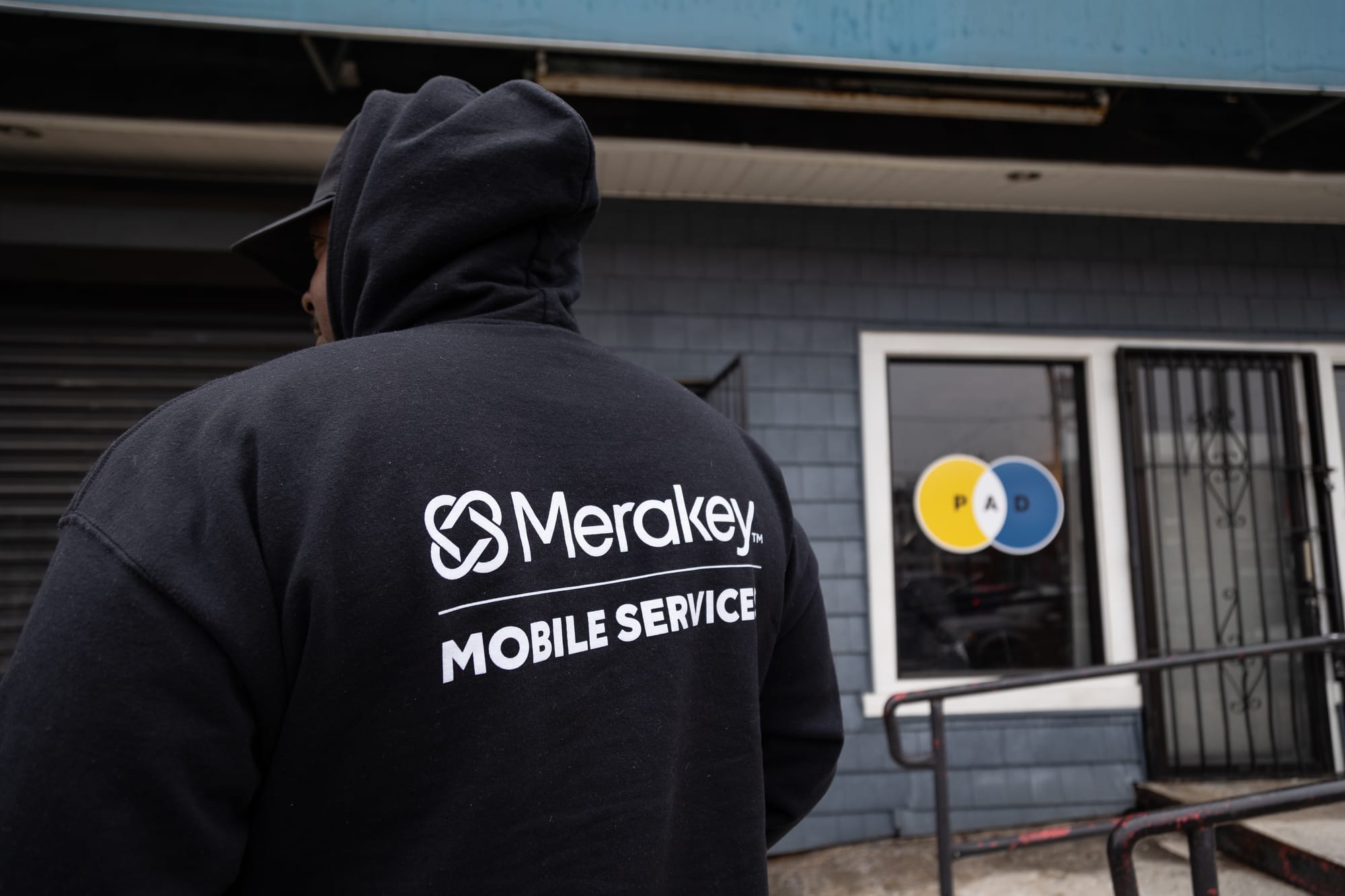
According to Young, the fact that people aren’t required to stay in PAD services helps to establish trust between program staff and participants. So does their open-door policy.
“We're not here to judge you, we're not here to force you to take any option that you want to take,” she said. “ If you're not ready today, okay. Our doors are open, here's the hours – come knock when you are ready.”
Project SAFE, an organization that provides resources to sex workers and people who use drugs in Kensington, released an independent diversion report this month. Among the report’s recommendations are for policymakers to divert police funds to service providers providing harm reduction and legal services.
Organizers there say the benefits of diversion programs come from the social services people receive and that people shouldn’t have to have a law enforcement interaction in order to receive those services.
“When people do have a positive experience in the diversion program, it's never about the cop stopping them,” said Project SAFE organizer Sultana, who asked to be identified by first name only. “It's about the case management and social services they receive on the back end. So it's like, why don't we just take the cop out of the equation?”
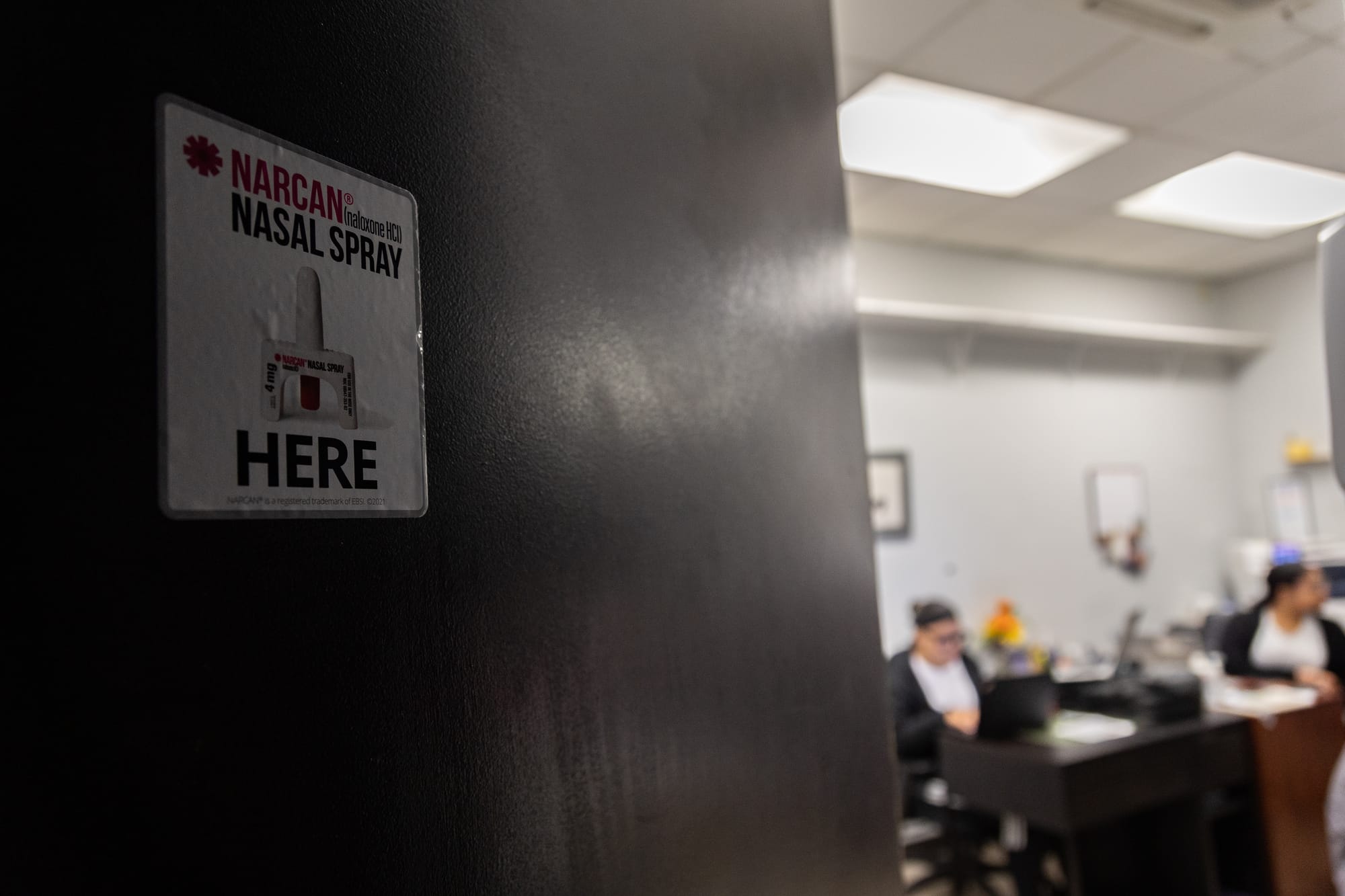
Jason Simmons, the PAD coordinator for partner organization Salvation Army’s New Day to Stop Trafficking program, said “the triage center is already what PAD does,” and if the program gets more stringent, New Day will continue to do their part to connect people to social services.
“Realistically, there’s always been a police presence in Kensington,” Simmons said. “We’ll just increase in diversions and increase in linkages to different services.”
There is no independent, quantitative research on re-arrest and incarceration rates following PAD involvement. But there is published qualitative research by the University of Pennsylvania, Columbia University, and Jefferson University focused on participant experiences.
In a 2019 study, interviews with participants found that respondents received “instrumental assistance obtaining healthcare, personal identification and other tangible resources” such as food. The study also found the most consistently expressed benefit was the emotional support participants received from case managers.
Marek, a 30-year-old PAD participant who asked to be referred to by first name only, got connected to a drug treatment program after being arrested and then diverted to PAD in 2022. He said he may not have followed through with his treatment plan if he hadn’t bonded with the PAD staff.
“There were finally people who cared, they treated me like a normal person,” he said. “After prison a lot of people go right back to the street. It doesn’t solve anything. It definitely worked well the way [PAD] did it.”
Marek stayed in treatment for nine months and has been in recovery since. He currently attends Alcoholics Anonymous on a regular basis, he said.
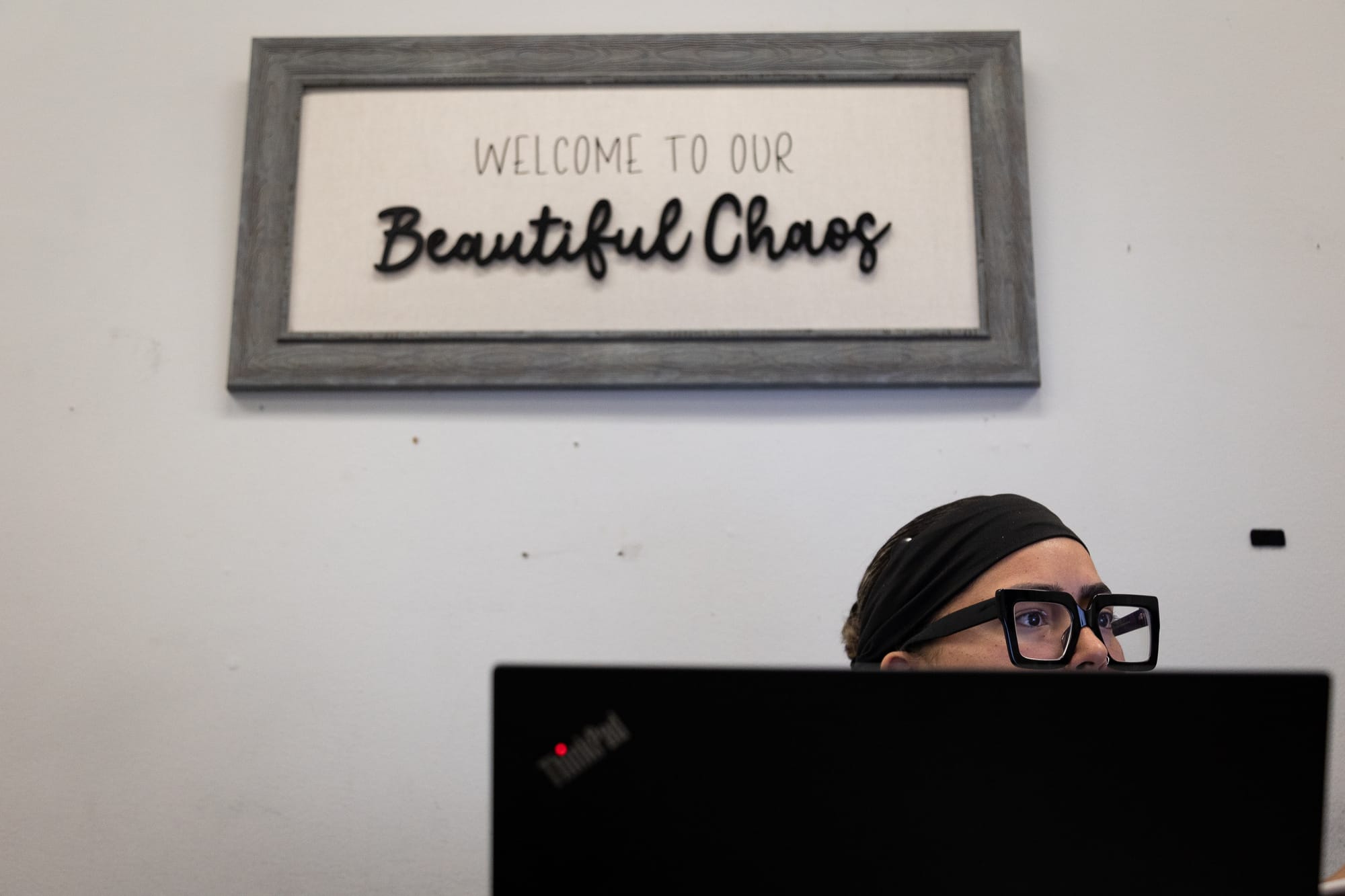
Building capacity
There are only nine PAD officers positioned around the city, compared to a total of 6,300 sworn officers in the Philadelphia Police Department. However, any officer can make a PAD referral, August said.
PAD referrals occur on Mondays through Fridays between 7 a.m and 11 p.m., according to PPD. Anyone stopped for PAD-eligible crimes overnight or on the weekends get “arrested and processed as normal,” according to a department spokesperson via email.
When people arrive at the PAD office looking for drug treatment, Merakey can offer outpatient treatment at one of their four brick-and-mortar locations. When someone needs inpatient treatment, they look for other facilities where they can transport people – hopefully on the same day, according to Young.
If there’s a wait for a bed, Young and her staff try to set someone up at a shelter for the night – or the hospital, if they have a medical need – and then get them to a detox facility in the morning. Some people choose to go back to wherever they were staying before they were referred, Young said.
“Detox is a complicated thing,” she said. “Unfortunately there aren't enough beds for as many people as want to go into treatment that day, and that’s just the reality of the situation.”
Based on the sign-in sheets that Merakey keeps, Young estimates about 80% of people who can’t be placed do return in the following days to be transported to treatment. If they return at a later date asking for treatment and they haven’t been arrested again, it does not count as a strike on their diversion record.
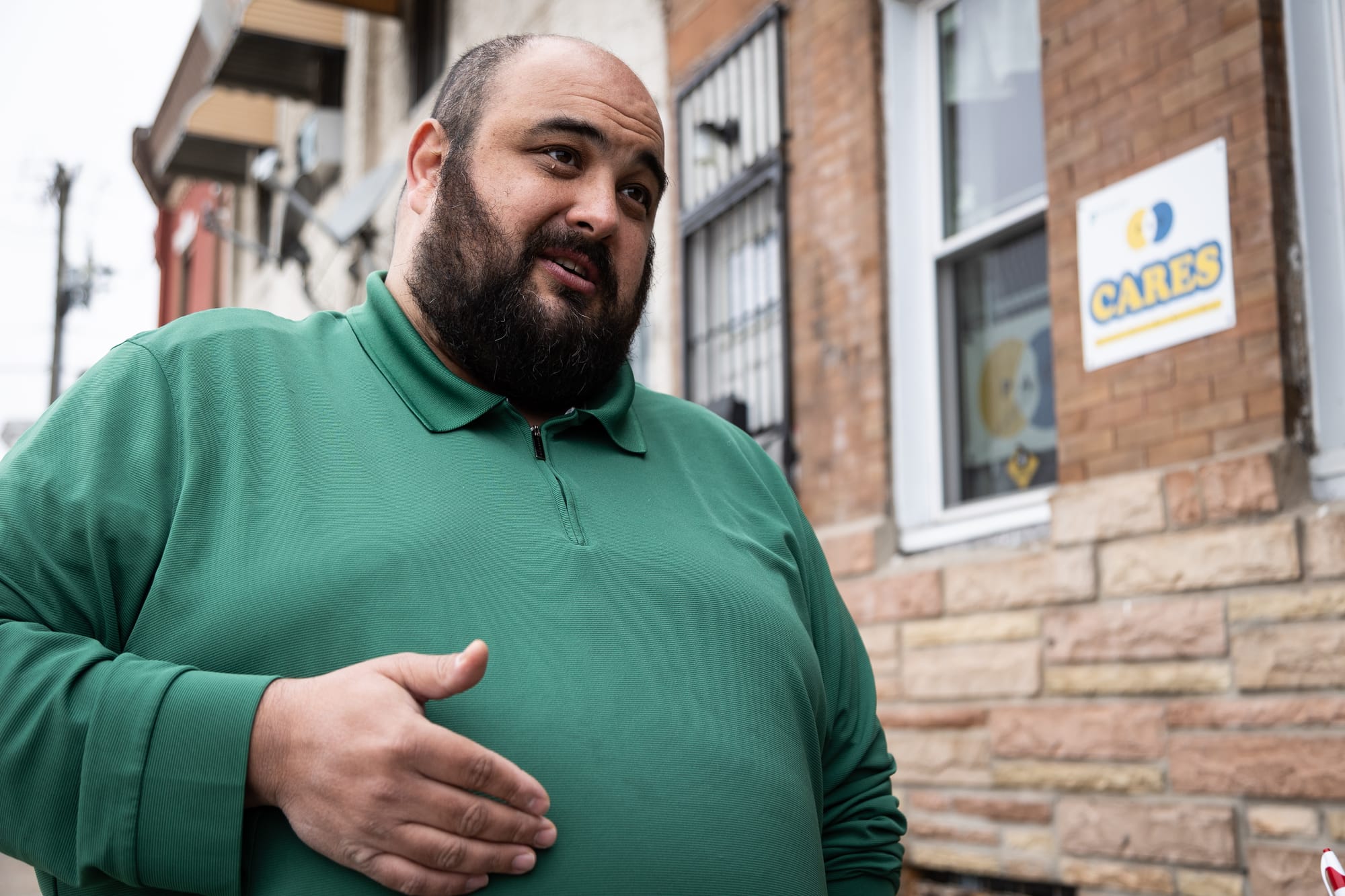
According to August, the biggest need in PAD right now is long-term housing. Most of PAD’s housing placements are living in shelters, hotels, or with a family member.
“[There’s] not a lot of long-term sustainable housing solutions, and a lot of times that’s the sort of underlying problem that needs to be addressed and a contributor to peoples’ issues with problematic substance use,” he said.
In a 2022 qualitative study focused on PAD client experiences, a “mismatch between services that PAD advertises and services that PAD provides” also emerged as a common theme, housing included.
“They don’t have no housing,” one respondent said. “Every single person in that building tries . . . in any way possible down to the water and coffee. If they don’t have resources for this, how can they help? . . . The only thing that they can honestly do is call.”
The city currently has a limited pilot offering 25 housing slots to people with serious mental illness transitioning from local custody, August said, noting that the need is “probably closer to 25,000 than 25.”
Have any questions, comments, or concerns about this story? Send an email to editors@kensingtonvoice.com.

